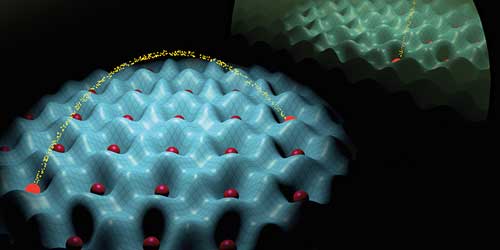Neutron scattering and computational modeling have revealed unique and unexpected behavior of water molecules under extreme confinement that is unmatched by any known gas, liquid or solid states.
In a paper published in Physical Review Letters, researchers at the Department of Energy’s Oak Ridge National Laboratory describe a new tunneling state of water molecules confined in hexagonal ultra-small channels — 5 angstrom across — of the mineral beryl. An angstrom is 1/10-billionth of a meter, and individual atoms are typically about 1 angstrom in diameter.
The discovery, made possible with experiments at ORNL’s Spallation Neutron Source and the Rutherford Appleton Laboratory in the United Kingdom, demonstrates features of water under ultra confinement in rocks, soil and cell walls, which scientists predict will be of interest across many disciplines.







